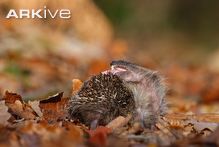Abnormal Hedgehog!
A video documentary on National Geographic Channel showed that hedgehogs,Erinaceus europaeus, have a weird tendency to consume the most unbelievable toxic substances such as tobacco, paint etc. After that, hedgehogs will perform self-anointing to spread the poison all over their body (NatGeoWild, 2012). This is a unique and peculiar behavior of hedgehogs and it is only possible because their body is highly resistant to poison and incredibly flexible. Other literature shows that birds behave similarly in the process of anting whereby they pick up fruits or burning vegetation and rub against their plumage. (Weldon, 2004)
Self- anointing is when a hedgehog experiences a new smell in their surrounding. It will then lick or chew on the source of the smell, foam up a lather in the mouth, contort its body to the most unbelievable position to spread the lather onto the spine (Brockie, 1976).
The reason behind self-anointing in hedgehogs is very diverse, including sexual signaling, social attraction, scent marking, masking of body odour and so on (Weldon, 2004). Majority of the investigations support the hypothesis that hedgehogs use self-anointing for self-defense by spreading poisonous substances on their back to deter predators (Burton, 1969). Interestingly, others have speculated that it is only observable among adult hedgehogs during breeding season to attract the opposite sex. (Brockie, 1976)
Despite so many speculations, it is definitely a weird behavior that will continue to leave the rest of us wondering.
Reference:
Brockie, R. (1976). Self-anointing by wild hedgehogs, erinaceus europaeus, in new zealand. In Animal Behavior (pp. 68-71).
Burton, M. (1969). In The Hedgehog. London: Andre Deutsch.
Immature hedgehog ‘self-anointing’- FLPA Images of Nature- Arkive. Archive.org hedgehog page, 10 April 2013. URL: http://www.arkive.org/hedgehog/erinaceus-europaeus/image-A23197.html
NatGeoWild (Director). (2012). World’s Weirdest: Hedgehogs Love Poisons [Motion Picture].
Weldon, P. J. (2004). Defensive anointing: extended chemical phenotype and unorthodox ecology. In Chemoecology (pp. 1-4). Basel: Birkhäuser Verlag.
